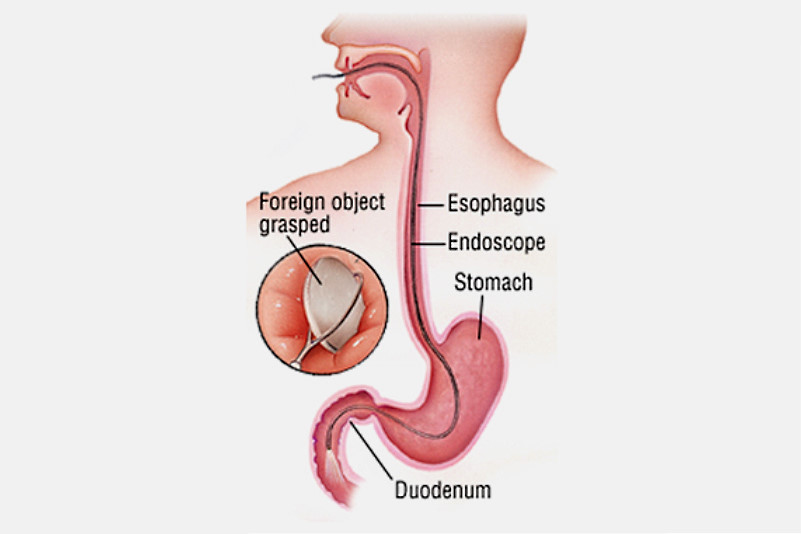-
drpvashistha@gmail.com
- +91 9004229819
Foreign Body Removal Treatment in Mumbai, Navi Mumbai
Foreign body removal is a medical procedure involving the extraction of objects or substances that have entered the body and are causing harm or discomfort. This can include items lodged in the skin, eyes, ears, nose, or other body parts. The process aims to safely and effectively eliminate the foreign material to prevent infection, injury, or further complications. It often requires precision and specialized tools to ensure minimal damage to surrounding tissues.
At Dr. Purushottam Vashistha's Clinic, expert foreign body removal treatment in Mumbai, Navi Mumbai is provided with a focus on precision and patient care. Dr. Vashistha, a seasoned medical professional, and his skilled team employ advanced techniques to safely and efficiently extract foreign bodies from various anatomical locations.
The clinic is equipped with state-of-the-art facilities, ensuring a comprehensive and accurate diagnosis before proceeding with the removal procedure. The team is committed to minimizing discomfort and potential complications associated with foreign body incidents, offering a seamless and patient-centric experience throughout the treatment process.
The clinic's approach is characterized by a combination of cutting-edge medical technology and a compassionate patient-centered ethos. Dr. Vashistha's expertise, coupled with a dedicated support staff, ensures that each patient receives personalized care tailored to their unique circumstances.
Whether the foreign body is lodged in the eyes, ears, nose, or other areas, the clinic's specialized services prioritize both efficacy and patient comfort, reflecting a commitment to delivering high-quality healthcare in the field of foreign body removal in the bustling metropolis of Mumbai and Navi Mumbai.
Foreign Body Removal Procedure at Dr. Purushottam Vashistha Clinic
At Dr. Purushottam Vashistha Clinic, our Foreign Body Removal Procedure ensures expert and precise intervention for the extraction of foreign objects lodged in various anatomical areas. With a commitment to patient safety and skilled medical professionals, we strive to provide effective and compassionate care in this specialized medical service.
Initial Assessment:The process begins with a thorough examination of the patient's medical history and symptoms. The healthcare provider evaluates the nature of the foreign body, its location, and potential risks associated with removal.
Diagnostic Imaging:In many cases, diagnostic imaging such as X-rays or ultrasound may be used to visualize the foreign body and determine its size, shape, and exact location.
Anesthesia or Local Anesthetic:Before the removal procedure, the patient may receive a local anesthetic to numb the area around the foreign body, ensuring minimal pain during the extraction.
Removal Procedure:The healthcare provider uses specialized tools or instruments to safely and precisely remove the foreign body. Depending on the case, techniques like forceps, suction, or other medical devices may be employed to extract the object.
Post-Removal Care:After the successful removal, the patient may be monitored for any immediate complications. Post-removal care instructions, including wound care and follow-up appointments, are provided to ensure proper healing and to address any potential issues.
Types of Foreign Bodies
Dr. Purushottam Vashistha Clinic is a renowned medical facility known for its expertise in handling various types of foreign bodies. Common types include ingested objects, such as coins or small toys, and foreign bodies in the eyes or ears. The clinic, led by Dr. Purushottam Vashistha, specializes in providing comprehensive and skilled care for patients dealing with foreign body-related concerns.
Foreign bodies can be classified based on various criteria, such as their composition, location, and size. In the context of foreign body removal, below are some types of foreign bodies:
Organic Foreign Bodies:These are objects derived from living organisms, such as wood, thorns, or splinters. Organic foreign bodies can be challenging to remove due to their porous nature and the potential for infection.
Inorganic Foreign Bodies:Inorganic objects include materials like glass, metal, plastic, or stones. These materials may pose different challenges during removal, depending on their size, shape, and the potential for causing tissue damage.
Chemical Foreign Bodies:Some foreign bodies may be chemical substances, such as toxic materials or irritants. Removal of chemical foreign bodies requires careful consideration of the potential harm they may cause to surrounding tissues.
Radiolucent Foreign Bodies:Radiolucent objects do not show up well on X-rays, making their detection and removal more challenging. Examples include certain plastics or materials that may not be easily visualized with standard imaging techniques.
Radiopaque Foreign Bodies:Radiopaque foreign bodies are easily visible on X-rays, simplifying their identification. Materials like metal or glass are often radiopaque and can be located precisely before removal.
Embedded Foreign Bodies:Some foreign bodies may become embedded in tissues, making extraction more complex. Examples include embedded glass shards or fragments of metal that require careful and thorough removal to avoid complications.
Each type of foreign body presents unique challenges in the removal process, and the approach may vary based on factors like the material's properties, size, and location within the body. A thorough assessment and appropriate tools are crucial for a successful foreign body removal procedure.

